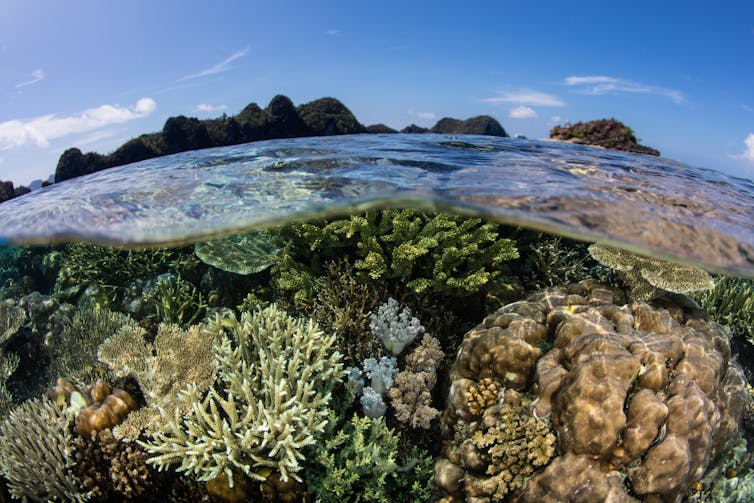With the dust still settling on the UN climate change summit in Egypt, another round of international talks is beginning in Montreal, Canada. The UN biodiversity conference, otherwise known as COP15, will assemble world leaders to agree new targets for protecting nature.
The loss of biodiversity – the dizzying variety of life forms from microscopic viruses, bacteria and fungi to towering trees and enormous whales – is accelerating. The last agreement in 2010 yielded the 20 Aichi targets which included halving the rate at which species were being lost and expanding protected habitats on land and in the sea by 2020. Governments failed to meet a single one.
A global assessment in 2019 showed that nature was declining globally at rates unprecedented in human history. The forces driving more and more species towards extinction – climate change, habitat destruction and pollution – are all trending in the wrong direction. Nothing less than a transformation of how societies work and the relationship between people and the rest of nature will get us on track.
‘Revolutionary change’ needed to stop unprecedented global extinction crisis
After two years of delay due to the pandemic and difficulties negotiating a new venue with the country that holds the conference presidency, China, many are relieved that COP15 is happening at all. That relief may prove short-lived as there is much to be done in these two short weeks. The grand objective is the approval of a new global biodiversity framework, essentially a plan for how the world’s nations expect to halt the loss of biodiversity and ensure that, by 2050, society is living in harmony with nature.

Paralaxis/Shutterstock
30% by 2030
One debate which has dominated discussions so far is how much land and sea should be set aside for conservation. The current text aims for 30% by 2030. Some scientists believe this is insufficient, and that preserving half the Earth for nature is necessary. Others are wary of reviving failed ideas which have tried to boost wildlife by expelling people and erecting walls to keep them out.
Negotiators will debate whether a 30 by 30 target should be met at the national level or globally. The former would mean each country meeting this standard within its own borders. The latter would prioritise Earth’s most important areas of biodiversity (such as tropical rainforests) but oblige countries with large remaining wildernesses (overwhelmingly in developing countries) to shoulder the lion’s share of conservation work. Many poorer countries foresee this stopping their economic development.
There is also disagreement over what level of protection should be given to these areas and how the rights of people living within them should be recognised. These plans would require a doubling of protected areas on land and perhaps as much as a tenfold increase in the oceans. But they could exclude indigenous people and those who make their living from cultivation, forestry and fishing.

EPA-EFE/Paolo Pena/Peru Mineria
Less emissions, less meat, less waste
Instead of concentrating on the total area reserved for nature, recent research highlights the importance of addressing the underlying causes of extinctions and habitat loss, such as greenhouse gas emissions, meat consumption and plastic pollution.
Targeting the processes driving biodiversity loss would shift attention away from where nature is being destroyed to the places where these processes are guided and sustained: boardrooms, trading floors, local planning offices and supermarkets.
The framework under negotiation includes several targets that would restrain the destruction, from eliminating policies subsidising the conversion of forest to cow pasture to halving food waste. These have failed to attract the momentum behind flashier goals like the 30 by 30 target. Changing how economies and societies function is more contentious and asks more from rich countries with more influence over the drivers of biodiversity loss.
Safeguard nature’s services
Yet another approach would safeguard the services nature generates, including flood protection, wood fuel, climate regulation and food provision. And it would identify the natural assets (wetlands, forests, coral reefs and mangroves to name a few) that must endure for these services to continue. This would mean protecting nature close to where it is most needed. A staggering 6.1 billion people live within one hour of such assets.
Good COP or bad COP?
While everyone gathering in Montreal agrees that a breakthrough is needed, there are different ideas about what that should look like. For many seasoned conservationists, a good outcome will mean more stringent targets for protecting and restoring nature and more expansive protected areas, plus the money and other resources necessary to enforce them.
Businesses, investors, cities, regional governments and the communities they represent want an agreement that mobilises the whole of society. Some companies have asked that all businesses be forced to report the impacts their activities have on nature. Cities and regions have their own pledges and have asked COP15 to formally recognise their role in delivering national plans.

Ethan Daniels/Alamy Stock Photo
This could bring the protection and restoration of nature into mainstream thinking around how economies develop and societies are organised, and make the case that much of what is important about nature is not to be found on the other side of a fence. This trend is evident in growing enthusiasm around nature-based solutions to climate change.
The recent UN climate summit in Egypt heralded the potential of such solutions, which include restoring peatlands and seagrass beds. These actions tackle the climate and biodiversity crisis together by expanding refuge for wildlife and drawing carbon from the air. Cities, businesses and investors smell an opportunity to meet multiple measures of sustainable development at once.
Some conservationists worry these supposed solutions are greenwashing and allow companies to exploit indigenous people and communities. Other experts argue that, with the right safeguards in place, these fears can be put to rest.
With much at stake, in seeking to straddle different agendas, COP15 risks achieving none.

Don’t have time to read about climate change as much as you’d like?
Get a weekly roundup in your inbox instead. Every Wednesday, The Conversation’s environment editor writes Imagine, a short email that goes a little deeper into just one climate issue. Join the 10,000+ readers who’ve subscribed so far.




